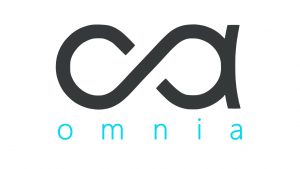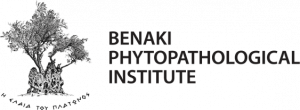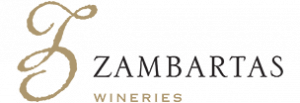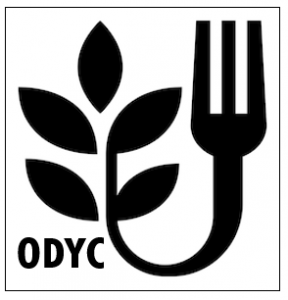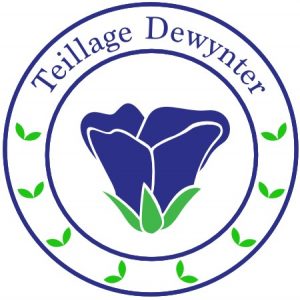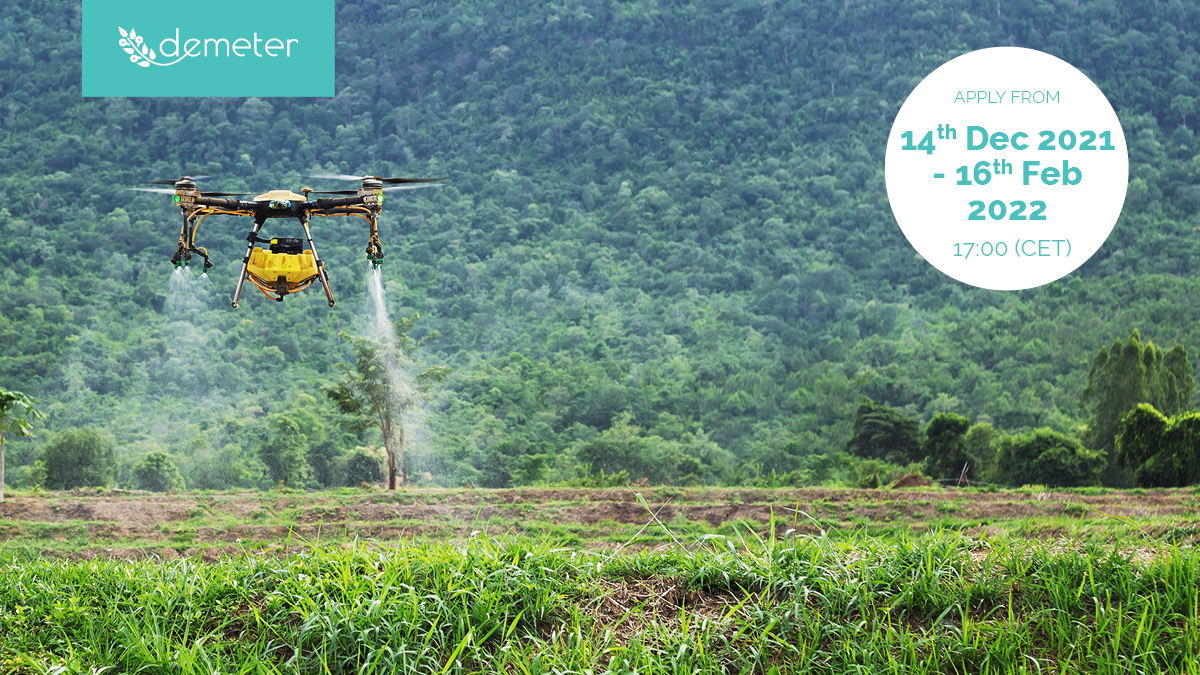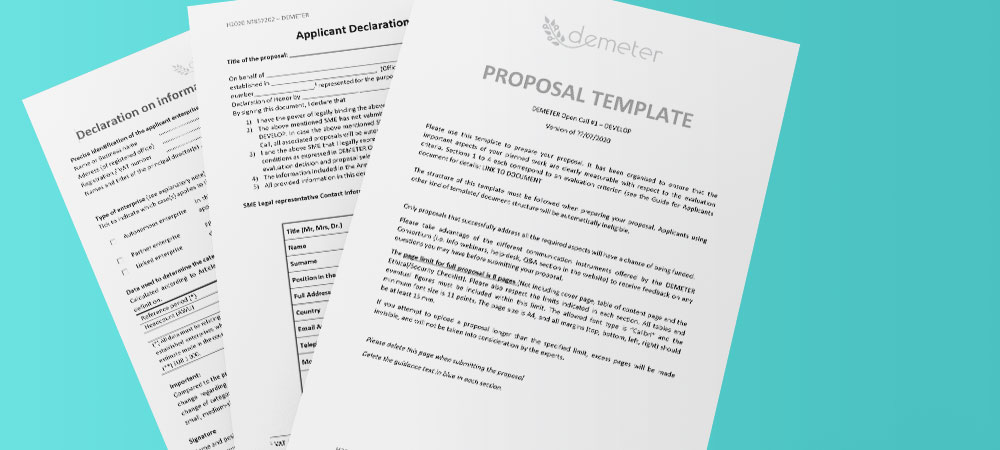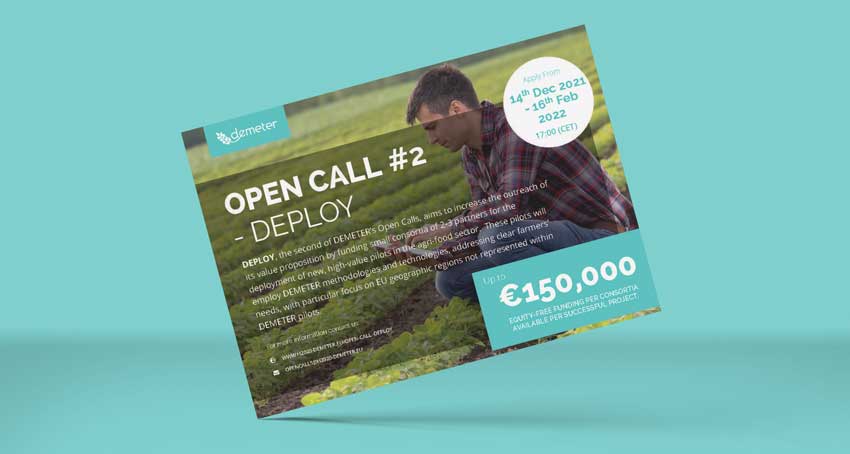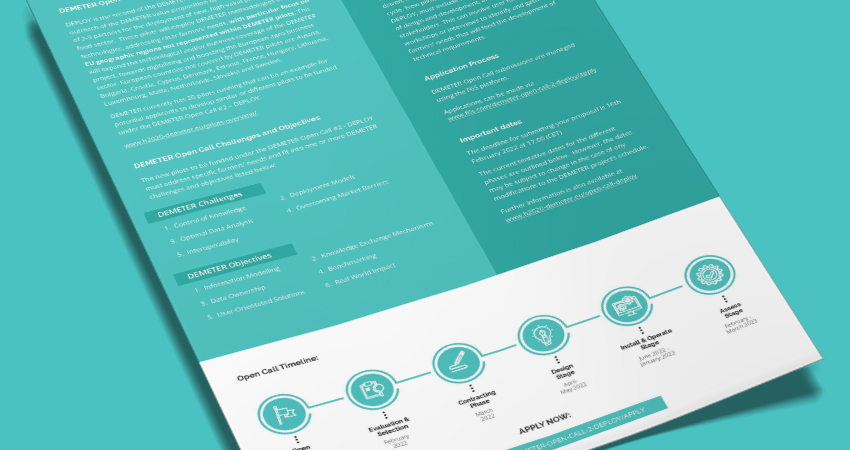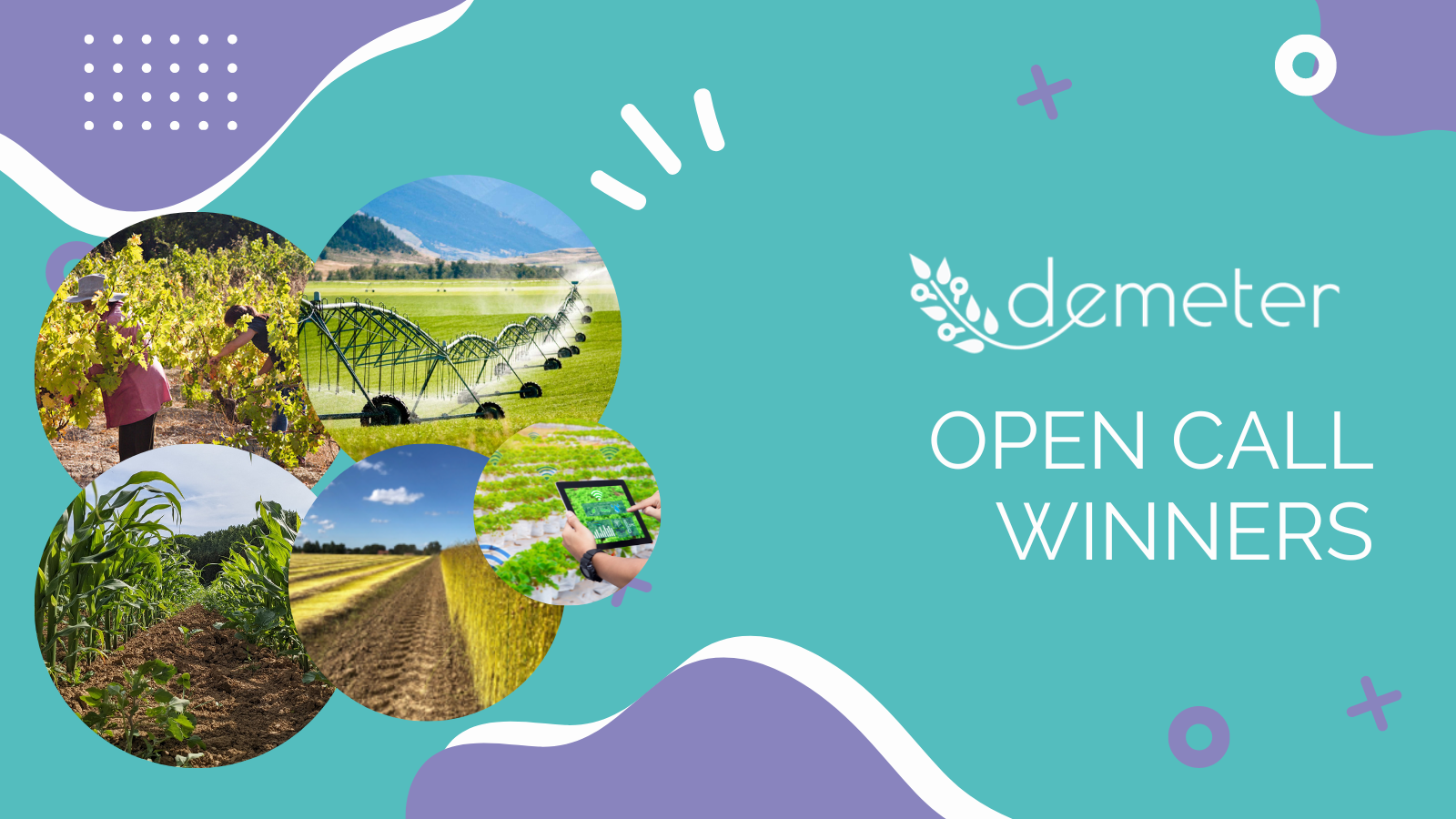
Open Call – Deploy Open Call #2 - DEPLOY
Aims to increase the outreach of the DEMETER value proposition by funding small consortia of 2-3 partners for the deployment of new, high-value pilots in the agri-food sector.
Open Call #2, DEPLOY
Open Call #2, DEPLOY, aimed to increase the outreach of the DEMETER value proposition by funding small consortia of 2-3 partners for the deployment of new, high-value pilots in the agri-food sector. These pilots focus on employing DEMETER methodologies and technologies, addressing clear farmer needs, with particular focus on EU geographic regions not currently represented within DEMETER pilots: Austria, Bulgaria, Croatia, Cyprus, Denmark, Estonia, France, Hungary, Lithuania, Luxembourg, Malta, Netherlands, Slovakia and Sweden.
In total, 60 applications were received, and 5 pilots/proposals were selected to join the DEMETER project.
CYPRUSAVES
Tools for water-saving and field management of Cypriot vineyards
CYPRUSAVES aims to address current and future water shortage and agricultural environment protection through sustainable manage of soil, nutrients, and pesticide use.
HARVEST NOW
Determine optimal harvest time window for hemp fields
The aim of the pilot is to help the huge potential of flax to be fully used, by helping the farmers in determining the best time window to harvest a specific field of hemp.
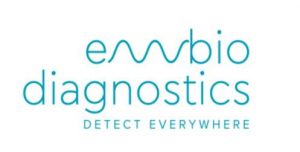
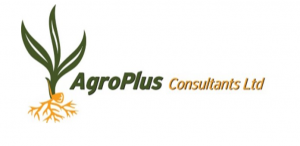
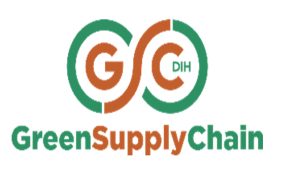
PENFA
Pesticide ENvironmental Fate Analysis (PENFA)
The challenge of PENFA project is to support decision making on pesticide use among agricultural producers.

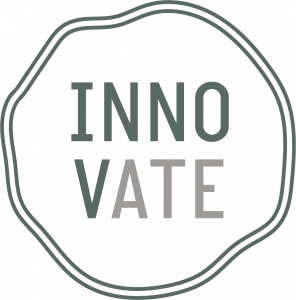

GEM4GF
Green energy management for green farms (GEM4GF)
Controlling the electricity use and cost for water pumps and cold warehouses is a crucial task for vegetable farmers in Eastern Austria.


HEMS
Herbicide Efficacy Analytic System for Sustainable Weed Control (HEMS)
Herbicide-resistant black grass is identified as an increasing problem in Luxembourg. Following the newly adopted Sustainable Use Directive of the European Commission, member states are expected to increasingly shift their dependence away from synthetic herbicides.
About the Open Call
Up to €150,000 equity-free funding per consortia available per successful project.
The DEMETER Open Call #2 – DEPLOY aims to increase the outreach of the DEMETER value proposition by funding small consortia of 2-3 partners for the deployment of new, high-value pilots in the agri-food sector. These pilots will focus on employing DEMETER methodologies and technologies, addressing clear farmer needs, with particular focus on EU geographic regions not currently represented within DEMETER pilots: Austria, Bulgaria, Croatia, Cyprus, Denmark, Estonia, France, Hungary, Lithuania, Luxembourg, Malta, Netherlands, Slovakia and Sweden.
This will expand the technological and/or business coverage of the project, towards digitalising and boosting the European agro-business sector.
DEMETER currently has 20 pilots running that can be an example for potential applicants to develop similar or different pilots to be funded under Open Call #2 – DEPLOY.
Deadline: Apply before 16th February 2022 at 17:00 CET
Open Call Challenges and Objectives
The new pilots to be funded under the DEMETER Open Call #2 – DEPLOY must address specific farmers’ needs and fit into one or more DEMETER challenges and objectives listed below:
| DEMETER Challenges | DEMETER Objectives |
|---|---|
|
|
Who Should Apply?
The DEMETER Open Call #2 – DEPLOY will fund consortia composed of two or three:
• micro, small and medium-sized enterprises (SMEs),
• secondary and higher education establishments, research institutes and other not-for profit research entities.
How to apply?
DEMETER Open Calls will be handled using the F6S platform.
Timeline
The submission of proposals to the DEMETER Open Call #2 – DEPLOY will be enabled via F6S from the 14th December 2021 until 16th February 2022, at 17:00 CET. The current tentative dates for the different phases are outlined below. The dates may be subject to change in the case of any modifications to the DEMETER project’s schedule.

DEMETER Challenges – Open Call
The new pilots to be funded under the DEMETER Open Call #2 – DEPLOY must address specific farmers’ needs and fit into one or more DEMETER challenges and objectives listed below
The DEMETER Challenges
Challenge #1 – Control of Knowledge
Farmers should be in control of the knowledge they can obtain from the data relevant to their specific requirements and activities, i.e., moving from the present situation in which farmers can be overwhelmed by the sheer amount of data to one in which they benefit from the insights of that data.
Challenge #2 – Deployment Models
A context where the lifespan of agricultural technology extends in some cases over 20+ years requires solutions and innovations to be deployed over existing machines. Protecting the existing investments made by farmers while making them part of a digitally enriched environment is a major driver for DEMETER.
Challenge #3 – Optimal Data Analysis
For useful trends and patterns to emerge, there is a need to work on large sets of data obtained across multiple farms. A key transformation resides in the ability to collect more data and measurements about the production: soil quality, irrigation levels, weather, presence of insects and pests, etc. In this context, reaping the full value of data requires the creation of trusted cooperation spaces in which data can be collected and shared, taking into account conflicting interests, competition etc. However, this is also an opportunity to put farmers fully in control of their rights on the data they generate.
Challenge #4 – Overcoming Market Barriers
Large players have aimed, early on, to establish themselves in dominant positions through supplier-operated technological and data platforms. This effectively increases the lock-in of farmers to a single or a selected group of suppliers, limiting their access to innovation. The challenge is in creating an innovative ecosystem for SMEs and entrepreneurs.
Challenge #5 – Interoperability
Interoperability and adoption of technological standards are key to ensure compatibility and to support data exchange and standardised communication that links the different systems together in a unified system covering all aspects of the agricultural exploitation.
DEMETER Objectives – Open Call
The new pilots to be funded under the DEMETER Open Call #2 – DEPLOY must address specific farmers’ needs and fit into one or more DEMETER challenges and objectives listed below
Based on the identified challenges, DEMETER defines 6 objectives to empower farmers and farmer cooperatives to:
- better exploit their existing operational context, i.e., the platforms, machinery, sensors they have, to extract new knowledge on which they can improve their decisions and
- ease the acquisition, evolution, and update of their context by focusing their investments where these are needed, based on their goals measured by key performance indicators (KPIs) that they select.
Objective 1 – Information Modelling
Analyse, adopt, enhance existing (and if necessary, introduce new) Information Models in the agri-food sector easing data sharing and interoperability across multiple Internet of Things (IoT) and Farming Management Information Systems (FMIS) and associated technologies. Use the information models to create a basis for trusted sharing/exposure of data between farmers.
Benefits: enable connection from different platforms, sensors, information sources and proprietary (to the farmer/cooperative) knowledge through a DEMETER services model.
Objective 2 – Knowledge Exchange Mechanisms
Build knowledge exchange mechanisms, delivering an Interoperability Space for the agri-food domain, presenting technologies and data from different vendors, ensuring their interoperability, and using (and enhancing) a core set of open standards (adopted across all agri-food deployments) coupled with carefully planned security and privacy protection mechanisms (also addressing business confidentiality).
Benefits: ease the deployment of novel solutions based on different platforms, sensors, information sources using the new information models from Objective 1. Ease the uptake of future (not yet developed) services, data sources, technologies by farmers, with the Interoperability Space allowing the farmers and relevant other stakeholders to increase the range of choices for the most appropriate combination of tools from different suppliers in order to support their expected innovation, limiting the vendor lock-in. Allow the combination of existing systems / machinery with new technologies.
Objective 3 – Data Ownership
Empower the farmer, as a prosumer, to gain control in the data-food-chain by identifying and demonstrating a series of new IoT-based, data-driven, business models for profit, collaboration and co-production for farmers and across the value chain, leading to disruptive new value creation models.
Benefits: introduce the benefits of data ownership to farmers as a valuable source of income and knowledge sharing.
Objective 4 – Benchmarking
Establish a benchmarking mechanism for agriculture solutions and business, targeting end-goals in terms of productivity and sustainability performance of farms, services, technologies, and practices based on a set of key performance indicators that are relevant to the farming community.
Benefit: ease the comparison between competing services, machineries, sensors, platforms prior to acquisition.
Objective 5 – User Orientated Solutions
Reverse the relationship with suppliers, through an innovative model in which suppliers are responsible for ensuring that a final solution is optimal to the farmer’s existing context and expressed needs.
Benefits: ease the adoption of technologies by farmers, by decreasing the burden of the choices and clarifying the responsibility model, linked to needs and performance improvements defined by the farmers.
Objective 6 – Real World Impact
Demonstrate the impact of digital innovations across a variety of sectors and at European level.
Benefits: ease and streamline mechanisms for all stakeholders, with clearly identified incentives to participate in a sustainable and value creation ecosystem. Structure collaboration channels in a security and privacy aware approach.
The Multi-Actor Approach
DEMETER follows a Multi-Actor Approach (MAA) which aims to make innovation fully demand-driven, involving various actors during the whole cycle. The aim of the DEMETER MAA approach is to create systems that are useful and usable by focusing on the end users. New pilots must include farmers at the earliest stage of design and development, among other relevant stakeholders. This can involve user focus groups, workshops or interviews to identify and gather farmers’ needs that will feed the development of technical requirements.
To ensure MAA is user-centric, stakeholders should regularly be contacted for input in a balanced way, through surveys or testing prototypes / new builds of the final software.
The applicants should register the farmers and other stakeholders involved in the innovation ecosystem as active actors and co-creators of the solutions, not only those involved directly in the call as applicants. Events involved in the co-creation process and their outcomes needs to be also reported and tracked as part of the process.
Finally, special attention to gender and ethical issues will be very much appreciated, requesting measurable information on the actions addressed supporting these initiatives from any of the stakeholders involved in the pilot.
DEMETER Technical Information
The goal of the DEMETER Open Call #2 – DEPLOY is to deploy high value and impactful pilots employing DEMETER methodologies and technologies. In this section, the DEMETER technological ecosystem, available for the implementation of the new pilots, is briefly presented.
The DEMETER Reference Architecture (RA) follows a modular approach that allows the composition of systems and apps from various enablers: these enablers either provide the necessary data or the necessary processing capabilities (e.g., analytics, decision support, visualization) needed to compose complete applications. In addition, key to the DEMETER architecture is the Agricultural Information Model (AIM) developed, which provides a common ontology in order to allow all enablers to communicate with one another (and which is described later in this report). To this end, another category of DEMETER enablers allows for the translation of various data formats (as needed) to and from the AIM model and format and these allow the communication of the various components to each other, thus achieving the desirable interoperability between existing components and new enablers.
Central to whole architecture is the DEMETER Enabler Hub (DEH), which centralises the full description of all the components, devices, services, data sources and platforms, accessible for exploitation and ultimately for deployment and which provides the tools and facilities that allow to compose DEMETER enabled apps and systems from the various enablers registered in it. The DEH is supported by the DEMETER Brokerage Service Environment (BSE), which facilitates the deployment of a DEMETER enabled application by providing information regarding the endpoints offered by the various DEMETER enabled entities (e.g., endpoints for getting data, for processing information in offered enablers) which have already been discovered and consumed through the DEH. In this way, the enablers have all the necessary information to execute the application. Another component crucial for this process is the DEMETER Access Control Server (ACS) that provides part of the security and authentication facilities needed. Finally, the DEMETER Stakeholders Open Collaboration Space (SOCS) focuses on resolving the needs of the farmers and provides an endpoint for them to access DEMETER.
On the other hand, the Agricultural Interoperability Space (AIS), focuses on delivering a full set of interoperability mechanisms to develop, validate and then deploy the solution, providing an endpoint for the developers and advisors to access DEMETER. Both SOCS and AIS are instantiations of the DEMETER Dashboard which is the entry point to the DEMETER ecosystem for all DEMETER Stakeholders, enabling them to access SOCS and AIS, and, through these, to the DEMETER Enabler HUB (DEH).
In order to facilitate the interoperability between the various enablers of the architecture, a key component is the DEMETER Agriculture Information Model (AIM) which provides a common data model for any DEMETER enhanced entities, and which is interoperable with the best known ontologies and models used in AKISs. This can be seen in the following diagram, which presents the high-level view of the DEMETER Reference Architecture.

Now, to implement this high-level view of the architecture, DEMETER needs to provide several modules that interact with each other, with the various stakeholders as well as with a wealth of existing devices, platforms, systems and data sources. In addition to the DEH, SOCS and AIS which have already been presented previously in this document, key to this process are several needed enablers. These fall within two categories: mandatory core enablers and optional advanced enablers.
The core enablers provide key functionality that is needed in every DEMETER app and therefore must be included in every app. These include, first, enablers for functional and semantic interoperability, which work on top of the existing resources, e.g., platforms, devices, services or applications, and provide data wrappers that allow the resource to interoperate with other enablers. Second, another core enabler is the Access Control enabler used, e.g., to prevent access to unauthorized entities. Finally, the last type of core enabler is a Client for the DEMETER Enabler Hub, for any information that needs to be communicated with the DEH’s runtime facilities, e.g., to get computing resources usage by other enablers which would be important when running DEMETER enabled apps.
The other type of enablers offered, the Advanced Enablers are optional and give additional functionality, as needed for each type of application. They are discoverable and accessible through the DEMETER Enabler Hub. The ones developed for the DEMETER pilots fall under several distinct categories. First, the Data & Knowledge Enablers are responsible for Collecting and Curating data from the various sources that the DEMETER developers and stakeholders have been registered for. The Data Preparation and Integration enablers curate, prepare, integrate and link the data obtained, while the Knowledge Extraction enablers handle matters related to data quality assessment, fusion of data collected from heterogeneous sources, targeted data analytics applicable to specific pilots and machine learning. Furthermore, several other enablers have been developed for Decision Support, Performance Monitoring and Benchmarking, as well as visualisation enablers that convey the information and actions taken automatically (or needed) to the final users of the DEMETER applications, such as the farmer.
More information is available in the Technical information (Annex 3)
Eligibility and Application
DEMETER invites consortia of 2-3 partners representing at least a tech provider/ integrator and an end-user, led by a for-profit SME.
Types of Beneficiaries
The DEMETER Open Call #2 – DEPLOY will fund consortia composed by two or three:
• micro, small and medium-sized enterprises (SMEs),
• secondary and higher education establishments, research institutes and other not-for profit research entities.
More specific information regarding beneficiaries is available in the Open Call Handbook.
Eligible countries
Only applicants legally established in any of the following countries (hereafter collectively identified as the “Eligible Countries”) are eligible:
• The Member States (MS) of the European Union (EU), including their outermost regions;
• The Overseas Countries and Territories (OCT) linked to the Member States; 1
• H2020 associated countries (those which signed an agreement with the Union as identified in Article 7 of the Horizon 2020 Regulation): according to the updated list published by the EC; 2
The UK applicants are eligible under the conditions set by the EC for H2020 participation at the time of the deadline of the call.
Language
English is the official language for DEMETER Open Call #2 – DEPLOY. Submissions done in any other language will not be evaluated. English is also the only official language during the whole execution of the DEMETER programme. This means any requested submission of deliverables will be done in English in order to be eligible.
Multiple Submission
Only one proposal will be accepted for funding per applicant.
In the case of a multiple submission, only the last one received (timestamp of the system) will enter into the evaluation process, the rest being declared as non-eligible. If the last submitted proposal is declared then non-eligible or fails to reach the thresholds of the evaluation, the other proposals submitted earlier will not be considered for evaluation in any case.
Documentation format
Any document requested in any of the phases must be submitted electronically in PDF format without restrictions for printing
How to apply?
DEMETER Open Call submissions are managed using the F6S platform.
Applications can be made here:
The deadline for submitting your proposal is 16th February 2022 (17:00 CET)
For more information, please contact opencalls@h2020-demeter.eu
Timeline
The submission of proposals to the DEMETER Open Call #2 – DEPLOY will be enabled via F6S from the 14th of December 2021 until the 16th February 2022, at 17:00 CET. The current tentative dates for the different phases are outlined below. The dates may be subject to change in the case of any modifications to the DEMETER project’s schedule.

Footnote
[1] Entities from Overseas Countries and Territories (OCT) are eligible for funding under the same conditions as entities from the Member States to which the OCT in question is linked.
[2] https://ec.europa.eu/research/participants/data/ref/h2020/grants_manual/hi/3cpart/h2020-hi-list-ac_en.pdf
Resources & Downloads
Download our Open Call Brochure
This brochure outlines the DEMETER Open Call #2 – DEPLOY aims to increase the outreach of the DEMETER value proposition, by funding small consortia of 2-3 partners for the deployment of new high-value pilots in the agri-food sector, employing DEMETER methodologies and technologies, addressing clear farmers’ needs, with particular focus on EU geographic regions not represented within DEMETER pilots.
Download our Open Call Postcard
This postcard briefly outlines the DEMETER Open Call #2 – DEPLOY and the challenges to be addressed.
Download our Flyer
This flyer details the DEMETER Open Call #2 – DEPLOY which aims to increase the outreach of the DEMETER value proposition, by funding small consortia of 2-3 partners for the deployment of new high-value pilots in the agri-food sector, employing DEMETER methodologies and technologies, addressing clear farmers’ needs, with particular focus on EU geographic regions not represented within DEMETER pilots.
Webinars
DEMETER hosted a webinar on 11th January 2022 to discuss the Open Call, DEPLOY.
Presentations from the webinar are available at https://www.slideshare.net/H2020DEMETER/demeter-open-call-webinar-january-2022
For any questions, please contact opencalls@h2020-demeter.eu
Frequently Asked Questions
Find the answers to our most commonly asked questions
About DEMETER Open Call #2
What is DEMETER?
The DEMETER Project is a large-scale deployment of farmer centric interoperable smart farming-IoT based platforms delivered through a series of 20 pilots across 18 countries (15 States in the EU). Involving 60 partners, DEMETER adopts a multi-actor approach across the value chain (demand and supply), with 25 deployment sites, 6,000 farmers and over 38,000 devices and sensors being deployed and participants involved come from different production sectors (dairy, meat, vegetables, fruit and arable crops), production systems (conventional and organic) and different farm sizes and types, optimising the data analysis obtained across multiple farms.
What is Open Call #2 – DEPLOY?
The DEMETER Open Call #2 – DEPLOY aims to increase the outreach of the DEMETER value proposition, by funding small consortia of 2-3 partners for the deployment of new high-value pilots in the agri-food sector, employing DEMETER methodologies and technologies, addressing clear farmers’ needs, with particular focus on EU geographic regions not represented within DEMETER pilots, expanding the technological and/or business coverage of the DEMETER project, towards digitalising and boosting the European agro-business.
What are the main Open Call characteristics?
The main characteristics of the DEMETER Open Call #2 – DEPLOY are presented in the table below
| Eligible applicants | Consortia of 2-3 partners representing at least a tech provider/ integrator and an end-user, led by for-profit SME. |
| Open call timeframe | From the 14th of December 2021 to the 16th of February 2022, at 17:00 CET |
| Activities to be funded | Deployment of high value and impactful pilots employing DEMETER methodologies and technologies, addressing clear farmers’ needs, with particular focus on EU geographic regions not represented within DEMETER pilots, towards, digitalising and boosting European agro-business. |
| Duration of activities | 12 months divided in 3 stages: Design > Install & Operate > Assess |
| Budget per project | Up to €150.000 (lump sum) per consortia. (Maximum financial support per partner of €100.000.) |
| Evaluation of proposals | Two-stage evaluation (Remote evaluation + online interview for top proposals) |
| Number of proposals to be selected | 4 to 8 pilot projects |
| Milestones/payments for selected applicants | • Design stage – 2 months: consortia will be invited to engage with farmers to gather their needs that will feed the development of technical requirements, fine-tune their pilot planning and technology usage with DEMETER experts; prepare follow-up/ KPI document associated with respective pilot. • Install & Operate stage – 8 months: deploy technologies in the field, configure units and software, initiate operations and collect relevant data. • Assess stage – 2 months: aggregate results on technologies impacts, communicate achievements. Payments are associated with stage results and divided by 20% + 60% + 20%, based the successful completion of specified milestones and reviews. |
How can DEMETER help me?
DEMETER can empower you to develop high value and impactful pilots, in the agri-food sector, employing DEMETER methodologies and technologies, through a 12-month programme, where experts in diverse fields will provide technical support, access to top infrastructure, €150k equity-free funding, visibility and the opportunity to work with the most innovative European agri-food stakeholders.
So, are you financing my initiative?
Your project/pilot could be financed if you are selected in the DEMETER call. Conditions are found in the Guidelines for Applicants. Each selected project can be funded with up to €150k.
How does DEMETER work?
After the open call for proposals, the selected projects/pilots will join the programme comprising 3-sprints (DESIGN: 2 months > Install & Operate: 8 months > Assess: 2 months). Each project defined milestones and deliverables in the submitted proposal. These are the basis for monitoring and evaluating the work progress during the execution of the activities. The milestones and deliverables will be evaluated at the end of each sprint.
What kind of projects are you looking for?
The DEMETER Open Call #2 – DEPLOY aims to increase the outreach of the DEMETER value proposition, by funding small consortia of 2-3 partners for the deployment of new high-value pilots in the agri-food sector, employing DEMETER methodologies and technologies, addressing clear farmers’ needs, with particular focus on EU geographic regions not represented within DEMETER pilots, expanding the technological and/or business coverage of the DEMETER project, towards digitalising and boosting the European agro-business.
The new pilots to be funded under the DEMETER Open Call #2 – DEPLOY must address specific farmers’ needs and fit into one or more DEMETER challenges and objectives listed below:
| DEMETER Challenges | DEMETER Objectives |
|---|---|
|
|
More information about each Challenge/Objective is available on the Guidelines for Applicants.
Where does the funding come from?
Funding is given by the DEMETER consortium under a Sub-Grant Agreement signed by the selected consortium coordinators and the DEMETER consortium. The funds are given by the European Commission (Horizon 2020 Framework Programme), which uses DEMETER as intermediary.
Is there any support for applicants without a selected idea?
No. Only the selected applicants will be benefiting from DEMETER Open Call #2 – DEPLOY services.
What if I secure funds from other national or regional authorities for the same project?
The funds of the project come from the H2020 Programme. This means its regulation will apply to the funds. If you get additional public funding from other entities, it will be your responsibility to assure the compatibleness of the different sources of funding.
How does the funding mechanism work?
The aid provided is relying on a cascade-funding scheme involving H2020 funds. The scheme is based on a Grant Agreement signed by the European Commission and the DEMETER Consortium partners. The Consortium partners as such receive the H2020 funds which are then transferred to the winners of the open calls based on the rules and regulations explained in the Guidelines for Applicants available at our website. This means that funds that will be received by the call winners are H2020 funds.
Due to BREXIT, is there any effect for legal entities and natural persons legally established in UK to be able to apply to DEMETER?
The UK continue to participate in programmes funded under the 2014-2020 Multiannual Financial Framework (MFF) until their closure.
Meaning, UK participants are eligible for funding under the DEMETER Open Call #2 – DEPLOY.
How large is your fund?
DEMETER will distribute a total amount of €740k in the Open Call #2 – DEPLOY.
How to participate
Who is eligible for the Open Call?
The DEMETER Open Call #2 – DEPLOY will fund consortia composed by at least a tech provider/ integrator and an end-user, led by a for-profit SME. Consortia can be composed by two or three:
- micro, small and medium-sized enterprises (SMEs),
- secondary and higher education establishments, research institutes and other not-for profit research entities.
Only applicants legally established in any of the following countries (hereafter collectively identified as the “Eligible Countries”) are eligible:
- The Member States (MS) of the European Union (EU), including their outermost regions;
- The Overseas Countries and Territories (OCT) linked to the Member States[1];
- H2020 associated countries (those which signed an agreement with the Union as identified in Article 7 of the Horizon 2020 Regulation): according to the updated list published by the EC[2];
The UK applicants are eligible under the conditions set by the EC for H2020 participation at the time of the deadline of the call.
See Guidelines for applicants for more eligibility criteria details.
[1] Entities from Overseas Countries and Territories (OCT) are eligible for funding under the same conditions as entities from the Member States to which the OCT in question is linked.
[2] https://ec.europa.eu/research/participants/data/ref/h2020/grants_manual/hi/3cpart/h2020-hi-list-ac_en.pdf
How do I apply?
The F6S platform is the entry point for all proposals at https://www.f6s.com/demeter-open-call-2-deploy/apply. Submissions received by any other channel will be automatically discarded.
Remember to read the Guidelines for Applicants to get all the information you need to apply successfully.
Can I submit several projects?
Only one proposal will be accepted for funding per entity, individual or F6S user.
- In the case of a multi-submission by an entity, individual, or F6S user, only the last one received (timestamp of the system) will enter the evaluation process, being the rest declared as non-eligible. If the last submitted proposal is declared then not eligible or fails the thresholds of the evaluation, the rest of proposals will not be considered for evaluation in any case.
What is the deadline for the Open Call #2 – DEPLOY?
16th February 2022 at 17.00 CET.
Are you sharing any information about my proposal?
Yes. The proposals information will be shared within the DEMETER Consortium, DEMETER Advisory Board and external evaluators. A summary of the proposals and the participants’ information will be shared with the European Commission. Moreover, we will publish an Open Dataset with the beneficiaries of our open call including their basic information data and funding received in our project website, social media accounts.
All the information that will be made public is clearly indicated in the official documentation of the call. Unless you want to, no technical insights will be published anywhere.
What are your funding criteria?
Every eligible proposal will be evaluated by at least two different experts. The evaluation criteria are:
- Excellence & innovation (40% weighting)
- Impact (25% weighting)
- Implementation (20% weighting)
- Value for money (15% weighting)
What information is required for the application?
The documents that are required to be submitted are:
- Application form: administrative questions to be completed directly in the F6S platform. In addition, some general questions for statistic purpose and tick boxes to be clicked by the third parties confirming they have read the conditions and agree with the conditions defined in the Guidelines for Applicants.
- Proposal description: document in PDF format containing the description of the project. It will include different sections: (1) Overview of the proposal, (2) Excellence/Innovation, (3) Impact, (4) Expertise and excellence of the team, (5) Project planning and value for money, and an Ethics Self-Assessment.
- Consortium Declaration of Honour: which declares that all conditions related to the DEMETER Open Call #2 – DEPLOY are accepted by the consortium partners legal representatives.
- SME Declaration: which evaluates the status of the participating SME.
Can I have access to my application answers?
You should be able to view and access all your applications on F6S. If you run into any issues accessing your applications or account, please contact support@F6S.com
What if I need to change the answers to my application?
If you have submitted an application and would like to change or update any information, before the open call deadline, please email F6S (support@f6s.com). Let them know what you would like to change along with the name of your project on your application.
When will I hear back regarding my application?
After applications close, the external evaluators will review applications for about 8 weeks. The goal is to notify applicants within 8 weeks from the call closing date.
Selected participants
When are we going to be paid?
Payments will be done in 3 instalments (20% + 60% + 20%) based on concrete results, deliverables and review of each sprint.
Summary of funding:
| DEPLOY Phase | Duration | Funding | Example (€150k) |
| DESIGN | 2-months | 20% | €30.000 |
| INSTALL & OPERATE | 8-months | 60% | €90.000 |
| ACCESS | 2-months | 20% | €30.000 |
Detailed payment schedule and payment conditions will be settled in the Sub-grant Agreement.
Do I have to keep track of my expenses for justifying the costs?
Payments will be done based on concrete results and not administrative justifications.
For audit purposes, the selected consortia shall make available all detailed information and data that may be requested by the EC or any representative authorised by it, with a view to verifying that the grant agreement is properly managed and performed in accordance with its provisions and that costs have been charged in compliance with it. This information and data must be precise, complete and effective.
Is subcontracting allowed?
Subcontracting is not encouraged. The general rule applicable to DEMETER project is that beneficiaries must have the appropriate resources to implement the full set of tasks needed within the project. This means it is not allowed to subcontract key parts of the project.
Is physical presence needed at any time for the applicants?
Each consortium should be available to participate in one face to face activity in Europe during one of the 3 sprints.
Other questions, comments, or concerns?
Didn’t find the answer you were looking for?
Ask us your question on the Online Q&A: https://www.f6s.com/demeter-open-call-2-deploy/discuss
For extraordinal communication need, please contact the Help Desk: opencalls@h2020-demeter.eu and we’ll get back to you shortly!


